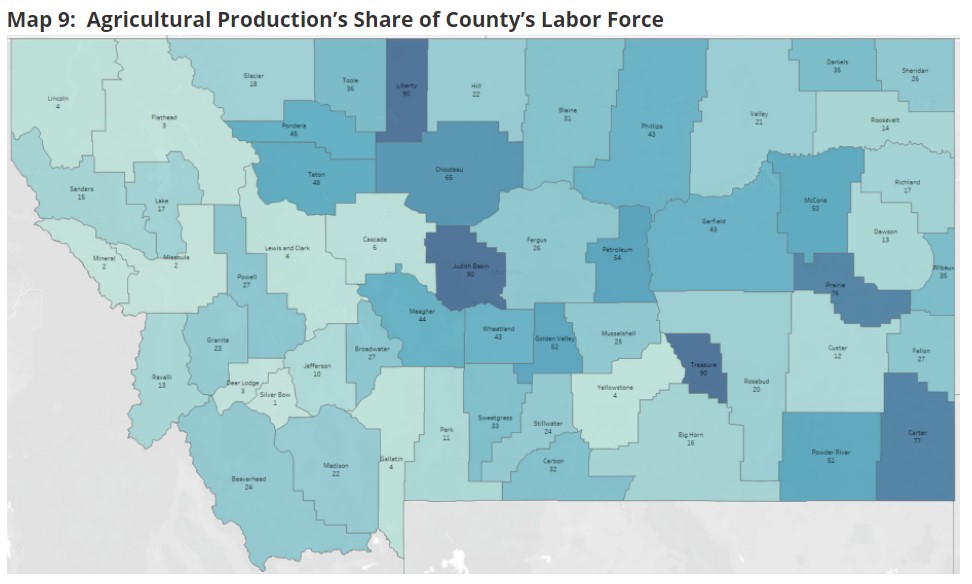In April of 2019, I wrote a blog post “Who is average?” exploring some of the limitations of only examining averages in a data set. Later that year, I began working on a project (with George Haynes and Jeff Peterson) that examined the role of production agriculture on the economy of each county in Montana. One of the motivating factors for this work was the hypothesis that the statewide average was not able to tell some important county level stories.
We gathered county level information from the NASS Census of Agriculture, Bureau of Labor Statistics, St. Louis Federal Reserve Bank and the Montana Department of Revenue. The data included, county GDP, Labor Force, Crop and Livestock Revenue, Farm Expenses, Government Payments, Property Tax Valuation, Agricultural Producer Demographics among other county data. The next step in our project was to utilize IMPLAN economic modeling software to estimate the number of jobs supported by production agriculture and the additional value (GDP) generated by production agriculture. One important limitation of this study is that the estimates presented do not include the valued added agricultural products after they leave the farm/ranch. These estimates will not capture economic activity at grain elevators, flourmills, meat-processing facilities and other post farm gate value added enterprises. However, these estimates do capture the economic activity of input suppliers (fertilizer, chemicals, etc.).
You are likely interested in your own county or region of the state so I won’t spend time trying to rank and compare all of the counties but rather encourage you to explore the reports on your own. I will point out one facts that supports our hypothesis that the average was not telling the entire story. Production agriculture supports 1% of Silver Bow County’s workforce while it supports 90% of Judith Basin County’s workforce. The statewide average is approximately 10%, which certainly is not very representative of agriculture’s impact in either Silver Bow or Judith Basin Counties.
As part of a recent virtual conference, I presented a 20-minute overview of these reports which you can view here.
The statewide report and the 56 county reports that are available here.

